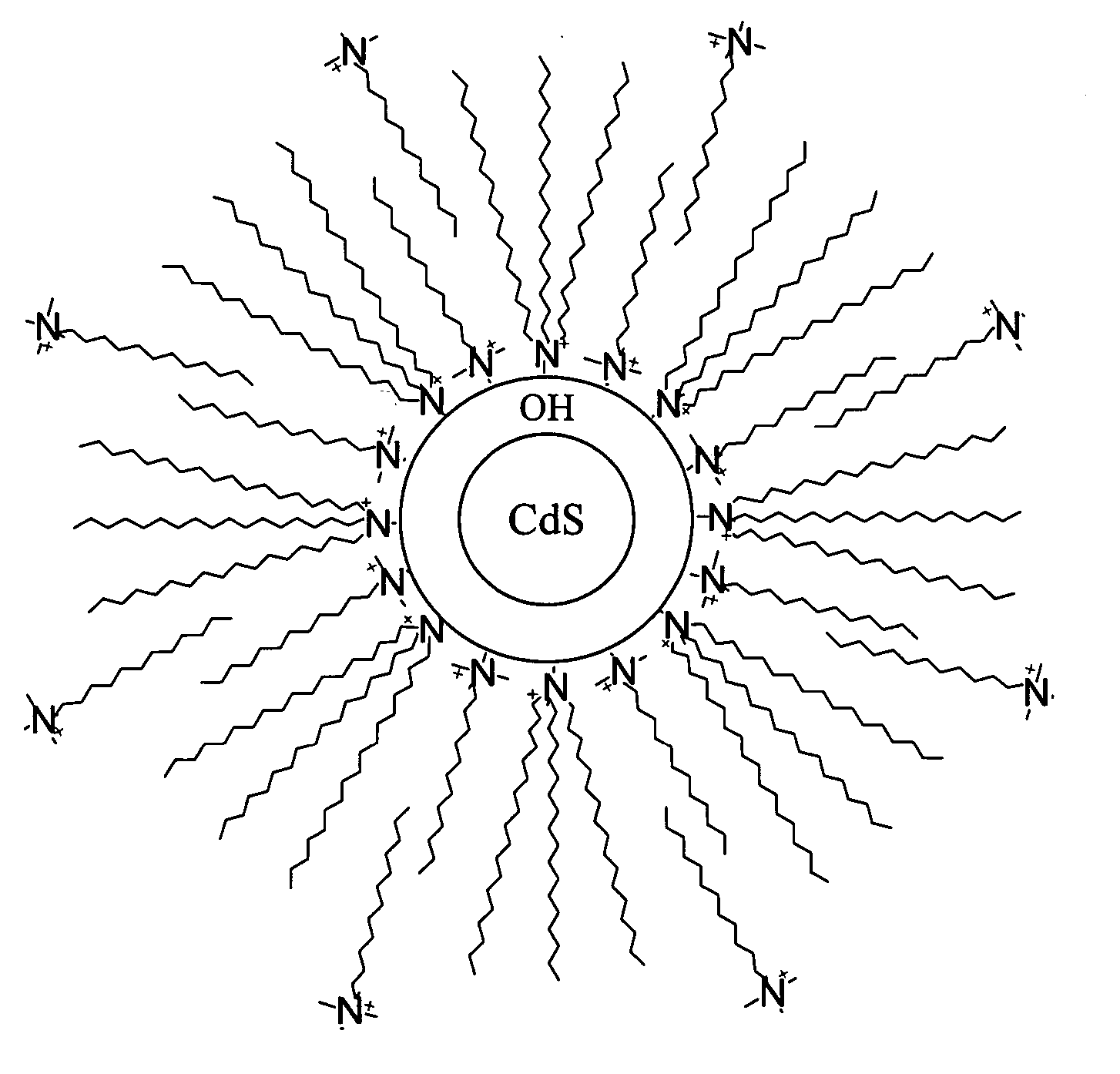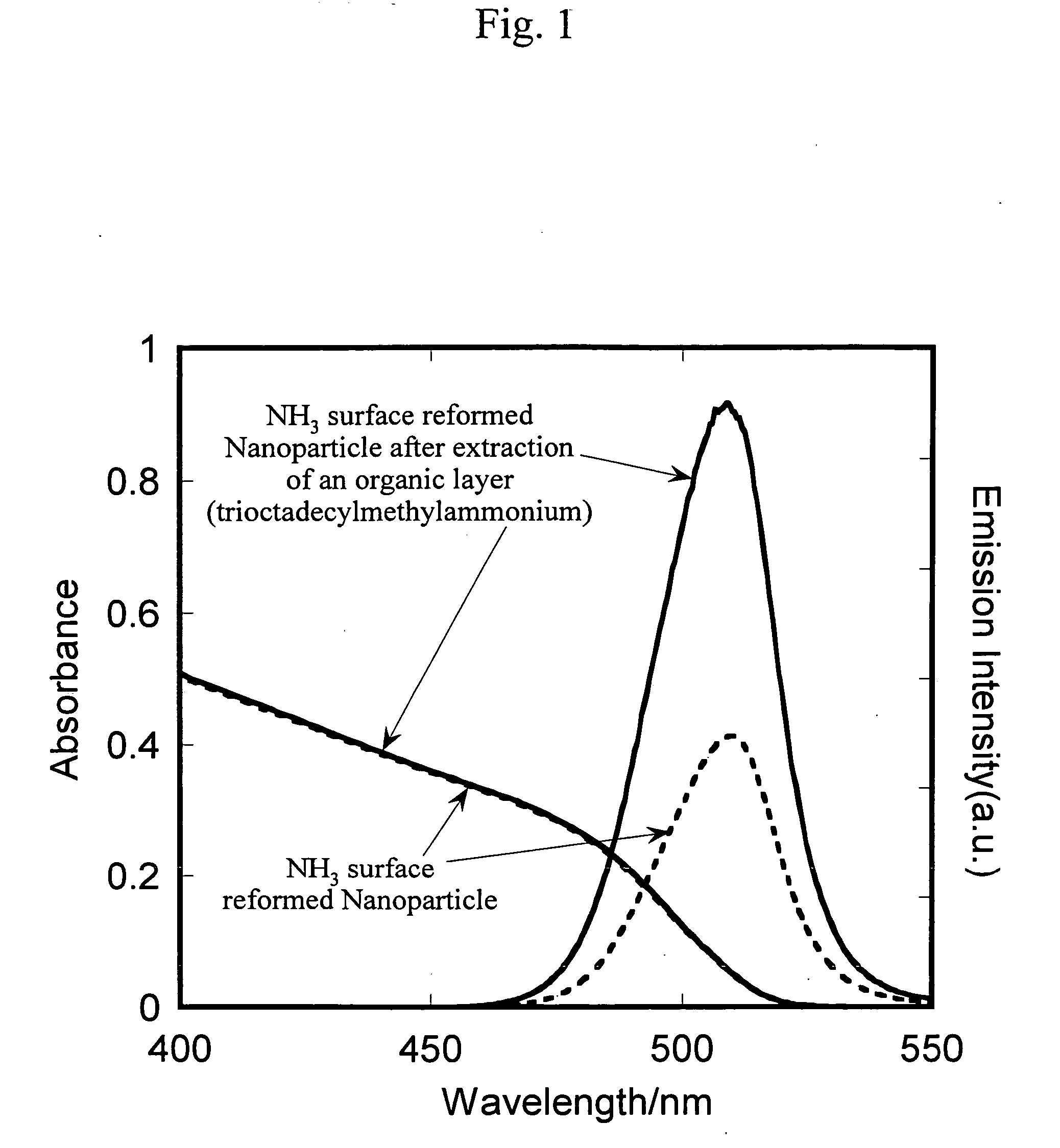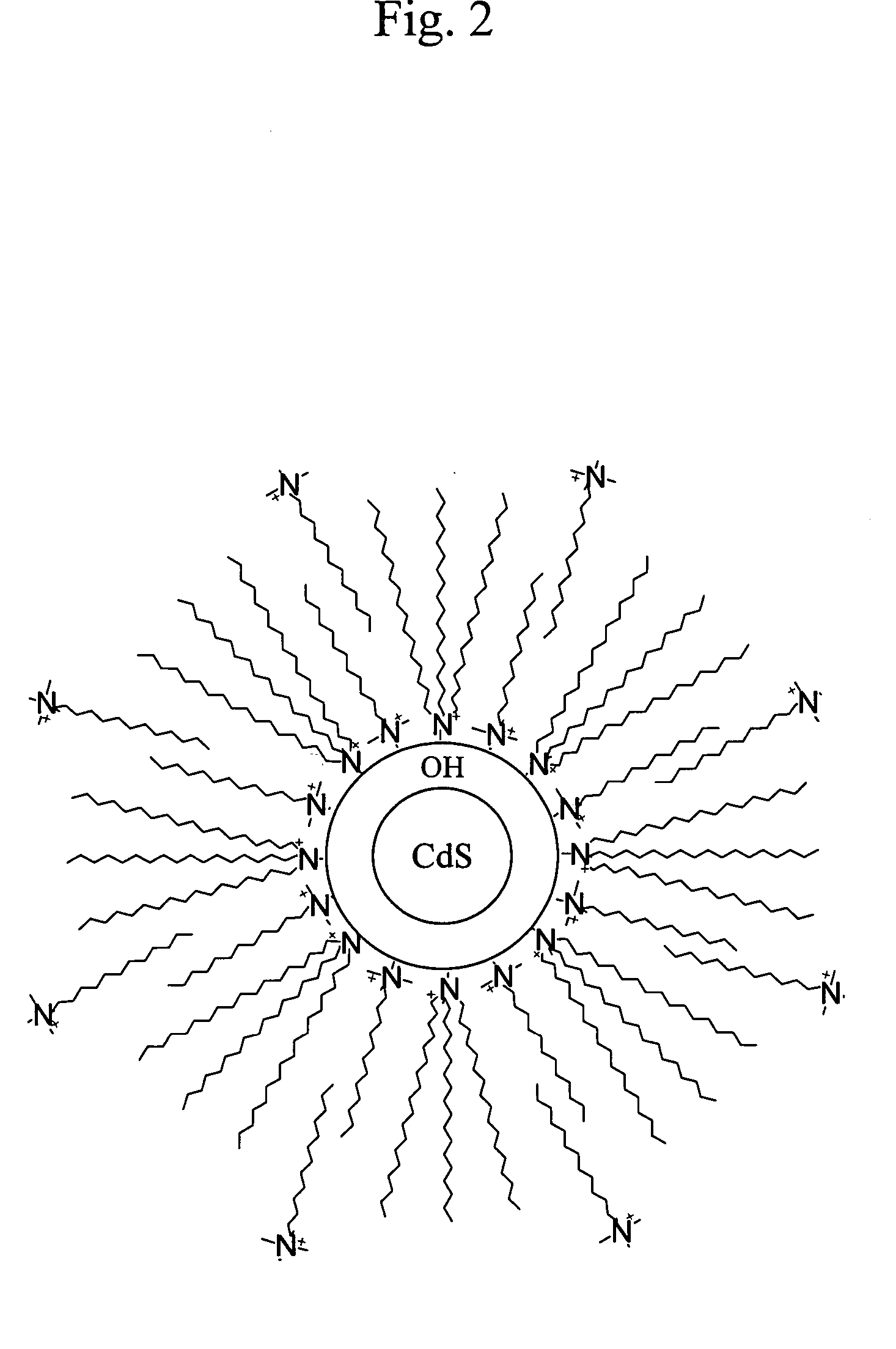Semiconductor nanoparticle surface modification method
a technology of semiconductor nanoparticles and surface treatments, applied in the field of semiconductor nanoparticles, can solve the problems of insufficient durability of semiconductor nanoparticles subjected to surface treatment, such as oh coating or ammonia treatment, and cannot be used in luminescent compositions, instruments, and other directions
- Summary
- Abstract
- Description
- Claims
- Application Information
AI Technical Summary
Benefits of technology
Problems solved by technology
Method used
Image
Examples
example 1
[0044] Nanoparticles perfectly dispersed into the organic solvent obtained as mentioned above were coated with amphipathic molecules. 10 ml of a solution in which nanoparticles had perfectly dispersed into the aforementioned organic solvent was put into a container such as a stoppered test tube or an eggplant shaped flask, etc. and was made to assume a membranous form on the inner wall of the container by evaporation. Then, the particles were dissolved again by adding 2 ml of solution in which dodecyltrimethylammonium chloride was dissolved in chloroform to a concentration of 5 mM, and the resulting solution was made to assume a membranous form again on the inner wall of the container by evaporation. Moreover, after removing residual chloroform by heating the container at 90° C., the particles were dissolved again by adding 2 ml of methanol. Then, methanol was removed by adding 10 ml of ultrapure water, followed by agitation for some time during heating to 90° C. Finally, an optical...
example 2
[0047] CdS nanoparticles perfectly dispersed into the organic solvent obtained as mentioned above (10 ml) were put into an eggplant shaped flask, and then hexane was removed by evaporation. 2 ml of chloroform was added and octadecylamine was added thereto to a concentration of 0.5 mM, and then, they were dissolved using ultrasonic wave. Further, the chloroform was removed by evaporation, and 2 ml of THF was added thereto for dissolving the nanoparticles again. Here, ultrasonic treatment may be used. Then, 10 ml of ultrapure water and a stirring bar were put into an eggplant shaped flask, and CdS nanoparticles dissolved in THF were rapidly poured thereto while agitated by the stirrer. The solution was dissolved by ultrasonic treatment, etc, only THF was removed by evaporation for obtaining a water solution, and then, the water solution was put into a centrifuge tube for removing precipitation by centrifugation. Thereby, water-soluble nanoparticles with amino groups arranged on the su...
PUM
 Login to View More
Login to View More Abstract
Description
Claims
Application Information
 Login to View More
Login to View More - R&D
- Intellectual Property
- Life Sciences
- Materials
- Tech Scout
- Unparalleled Data Quality
- Higher Quality Content
- 60% Fewer Hallucinations
Browse by: Latest US Patents, China's latest patents, Technical Efficacy Thesaurus, Application Domain, Technology Topic, Popular Technical Reports.
© 2025 PatSnap. All rights reserved.Legal|Privacy policy|Modern Slavery Act Transparency Statement|Sitemap|About US| Contact US: help@patsnap.com



